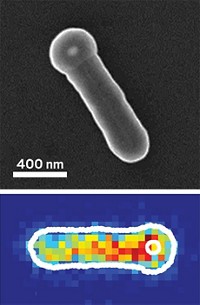Advertisement
Grab your lab coat. Let's get started
Welcome!
Welcome!
Create an account below to get 6 C&EN articles per month, receive newsletters and more - all free.
It seems this is your first time logging in online. Please enter the following information to continue.
As an ACS member you automatically get access to this site. All we need is few more details to create your reading experience.
Not you? Sign in with a different account.
Not you? Sign in with a different account.
ERROR 1
ERROR 1
ERROR 2
ERROR 2
ERROR 2
ERROR 2
ERROR 2
Password and Confirm password must match.
If you have an ACS member number, please enter it here so we can link this account to your membership. (optional)
ERROR 2
ACS values your privacy. By submitting your information, you are gaining access to C&EN and subscribing to our weekly newsletter. We use the information you provide to make your reading experience better, and we will never sell your data to third party members.
Synthesis
Select Nanocrystal Facets Activate Oxygen
Study finds Pd {100} facets selectively induce oxygen electronic excitation and subsequent oxidation reactions
by Mitch Jacoby
February 25, 2013
| A version of this story appeared in
Volume 91, Issue 8
Oxidation reactions between organic compounds and O2 often require an activation step to promote O2’s electronic configuration from a triplet ground spin state to a singlet excited state. Noble-metal nanoparticles can catalyze such oxidations, but the metal’s role in electronic excitations has remained unclear. To sort out those details, Ran Long, Yujie Xiong, and coworkers at the University of Science & Technology of China studied model single-facet nanocrystals—{100}-faceted nanocubes and {111}-faceted nanooctahedrons. The team found that palladium {100} facets readily promote O2 spin flipping and subsequent oxidations, and Pd {111} facets do not (J. Am. Chem. Soc., DOI: 10.1021/ja311739v). The group established the {100} facets’ knack for exciting O2 in a series of electron spin resonance spectroscopy control tests on probe molecules and singlet-oxygen scavengers. They also showed that {100}-faceted Pd crystals selectively mediate glucose oxidation and human cervical cancer cell death. The group proposes that these findings, which may lead to improved catalysts and cancer treatments, can be attributed to facet-specific differences in O2’s bond length and magnetic moment that are induced upon adsorption on the nanocrystals.




Join the conversation
Contact the reporter
Submit a Letter to the Editor for publication
Engage with us on Twitter